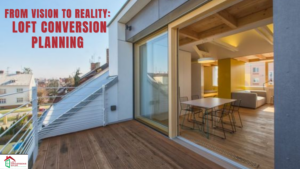Summary: This blog post delves into a range of environmentally friendly design concepts and materials suitable for a loft conversion project. Topics addressed include insulation choices, sustainable flooring, energy-efficient windows, and eco-friendly paint options.
Implementing eco-friendly practices in your loft conversion can contribute significantly to creating a sustainable and energy-efficient living space. In this blog post, we will discuss various environmentally conscious design ideas and materials that you can use for your loft conversion, promoting a greener and more responsible approach to home improvement.
Green Insulation Choices for Your Loft Conversion
Effective insulation is crucial for reducing energy consumption and maintaining a comfortable temperature in your loft conversion. Several eco-friendly insulation options are available, such as:
- Sheep’s wool insulation: A natural, renewable material with excellent thermal properties.
- Recycled cellulose insulation: Made from recycled newspaper, this option provides both thermal and acoustic insulation.
- Wood fibre insulation: A sustainable and biodegradable choice that offers good insulation performance.
Sustainable Flooring Materials to Consider
Choosing sustainable flooring materials can help minimise the environmental impact of your loft conversion. Some eco-friendly options include:
- Bamboo flooring: A renewable and fast-growing resource with the durability of traditional hardwood flooring.
- Cork flooring: A sustainable material harvested from cork oak trees without causing harm to the tree, offering a comfortable and warm surface.
- Recycled rubber flooring: Made from recycled tyres, this option is durable, low-maintenance, and sound-absorbing.
- Energy-Efficient Windows for Optimal Temperature Control: Investing in energy-efficient windows can help reduce energy consumption and maintain a comfortable temperature in your loft conversion. Double or triple-glazed windows with low-emissivity glass coatings can significantly reduce heat transfer and minimise heat loss during colder months.
Environmentally Friendly Paint Options
Using eco-friendly paint can reduce the release of harmful chemicals into the environment and improve indoor air quality. Consider using water-based, low-VOC (volatile organic compounds) paints, or natural and organic paint alternatives.
Incorporating Renewable Energy Sources
To further reduce the environmental impact of your loft conversion, consider integrating renewable energy sources, such as solar panels or a small wind turbine, to power your new space. These options can help lower energy costs while contributing to a more sustainable future.
Creating an eco-friendly loft conversion involves using sustainable design ideas and materials to reduce the environmental impact of your project. By considering green insulation, sustainable flooring, energy-efficient windows, environmentally friendly paint, and renewable energy sources, you can create a responsible and eco-conscious living space. Keep these tips in mind as you embark on your environmentally friendly loft conversion journey.


